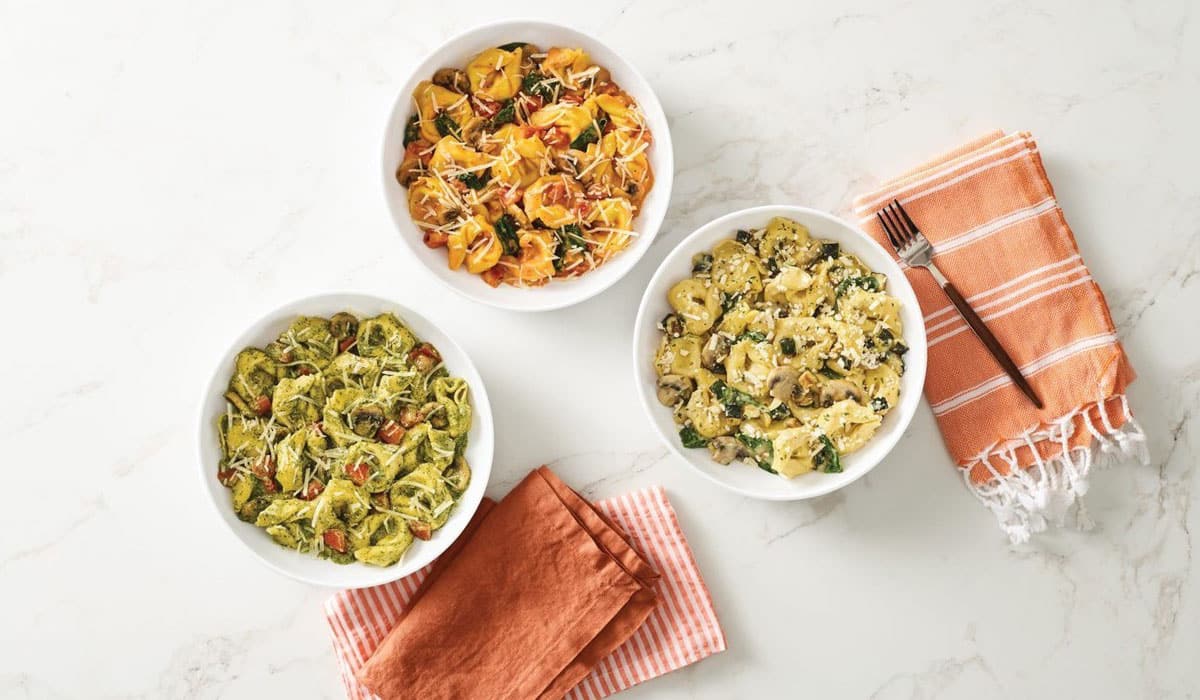Noodles & Company’s total revenue in the third quarter increased 18.1 percent to $125.1 million, up from $106 million in Q3 of 2020. The company continued a strong 2021 with positive margins across most categories, including comp sales, which increased 16.3 percent system-wide, made up of a 15.3 percent increase at company-owned restaurants and a 21 percent lift at franchise restaurants.
Company average-unit volume was up as well, setting a record at $1.38 million, which represented a 16 percent hike compared to Q3 2020 and a 15.9 percent increase over Q3 2019.
“In addition to strong sales performance, our restaurant-level margin in the third-quarter expanded 270 basis points versus the prior year to 18.1 percent, despite the impact of the current inflationary environment,” CEO Dave Boennighausen said in the chain’s Q3 earnings call.
Boennighausen credited several factors. He said both AUV and the company’s margin expansion could be attributed to the success of newly opened units, specifically those that debuted between 2019–2021. Those stores continue to perform above company averages.
Also, Boennighausen said the fast casual’s continued implementation of a three-tiered strategic plan has generated quantifiable results.
The tiers are continued differentiation of the company’s concept to appeal to a broad range of lifestyles; further activating the brand through digital assets; and accelerating unit growth to take advantage of an operating model the concept feels is ideally suited for a post-COVID world.
Noodles & Company’s rewards program continues to be a boon for the company, with membership approaching 4 million. The CEO said the program is a key factor in customer acquisition, and allows Noodles & Company to develop more personalized, relevant communication.
“We have made significant progress with our digital capabilities and their impact on driving new guests, new usage occasions, and increased frequency among a broad group of consumers,” he said. “Digital continued to account for 52 percent of our sales in the third quarter, even as in restaurant ordering returned to 70 percent of pre-COVID levels.”
Some of the restaurants that opened between 2019–2021 feature order-ahead, drive-thru windows, and Boennighausen credits this new feature with helping drive an increase in sales.
He said the company estimates, on average, that the new feature increases sales by approximately 10–20 percent relative to traditional new restaurants.
“We continue to expect at least 70 percent of new restaurants to incorporate the order-ahead, drive-thru windows as they improve convenience for our guests and are easy to execute for our operations teams,” he said.
Although new units are surging, Noodles & Company hasn’t been entirely immune to issues like supply chain shortages that have plagued others in the industry. CFO Karl Lukach said several openings were pushed back.
“We and our franchisees have seen delays in construction, landlord building delivery, and equipment availability over the last several months,” he said. “As a result, we have pushed three company openings and two franchise openings originally slated for 2021 into early 2022.”
For 2021, the company now expects seven to nine new restaurants systemwide compared to a previously predicted 10–15. The change in the number of stores opening this year does not overly affect broader growth predictions. Lukach said the larger pipeline remains strong as the company looks to eventually open at least 1,500 units nationwide.
Additionally, the CFO provided an update related to the rollout of new steamer equipment. He said the company is 75 percent done so far and expects up to 90 percent of steamer equipment to be added by the end of the year.
“We remain encouraged by the positive results demonstrated by improved cook times, reduced labor hours, and better taste of food scores,” he said.
Noodles & Company’s operating costs were 280 basis points higher than 2019. He said this can be attributed to third-party delivery fees.
“Delivery fees were 5.3 percent of sales in the third quarter, compared to 5.5 percent in the third quarter of last year,” he said. “We expect third-party delivery to remain an important driver of the business going forward. And as such, we expect our operating cost percentage in the fourth quarter to be at similar levels to the third quarter.”
As inflation and supply shortages continue to affect the costs of goods, menu prices have been steadily increasing throughout the industry. Noodles & Company is no exception, with a planned price increase of 2 percent being applied to their core menu for Q4.
“This increase will coincide with the lapping of price actions taken last year in fourth quarter, and we expect full fourth-quarter pricing to be approximately 7.5 percent,” Lukach said.
For Q3, cost of goods sold was 25.1 percent of sales, an increase of 30 basis points from last year and 20 basis points better than Q3 2019, which is a better outcome than was predicted in Q2 2021. That can be attributed to three things, Lukach said.
“Our ability to offset the current inflationary environment was driven by temporarily securing shorter-term inventory at more favorable rates than the spot market, driving efficiencies in our discounts, and the 3 percent pricing we took on our core menu during the third quarter,” he said.









